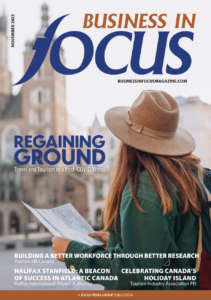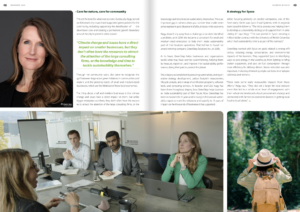When Angela Nagy was 18, she was hired to coordinate grants to build an interpretive greenway trail along Mission Creek in Kelowna, British Columbia, about four and a half hours northeast of Vancouver. The aim was to protect the ecosystem of the creek and support community learning about native species, history, and conservation.
What she realized very early on was that if she was going to help write grants, she had to have a good understanding of how people and the city were impacting the ecosystem.
“That really opened my eyes. I learned a lot about how human behaviour impacts the environment, and that there weren’t necessarily regulations in place to prevent it,” says Nagy. “I just assumed, ‘hey, if these things are bad for the environment, the government would stop that.’ Well, I quickly learned that’s not always how things work.”



